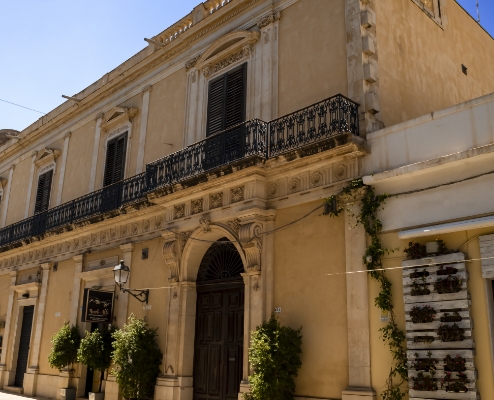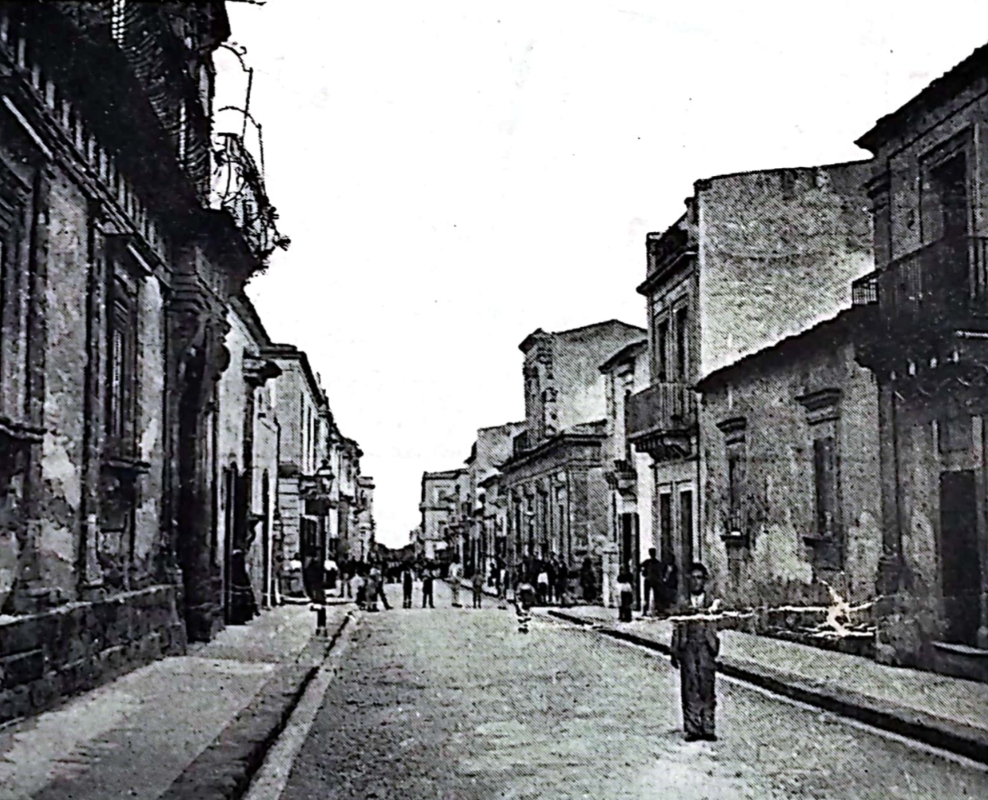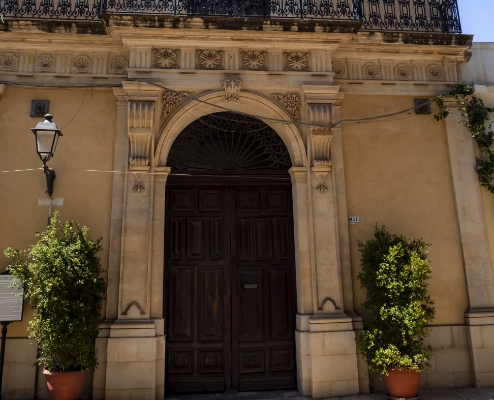Sirugo-Alessi Palace
1693-18th Century - Rebuilt 1902-1912
Private property.
Not open for visits.

Don Antonino Sirugo, mayor of the old city of Avola in 1684, was a member of the house of Gentilhomini and brother of Giuseppe (†1690), Baron of Vignazze. In 1693, when the earthquake struck, he held the post of treasurer of the marquisate.
In the new city Antonino built his house on a large parcel of land adjoining the site of the Church of St. Anthony of Padua. The main external wall, connected to the outside of the church, was on the former Strada del Corso (Corso Vittorio Emanuele), while the side entrances opened onto the current Via Napoli, Strada Chiesa Matrice (Via Cavour) and Piazza di S. Antonio da Padova (Piazza Vittorio Veneto).
Antonino Sirugo was succeeded in 1700 by his son Giuseppe, who married Dorotea Astuto from Noto in 1712, thus acquiring the title, maritali nomine, of Baron of Meti and Santa Domenica. The delli Meti feud, property of the marquises of Avola and granted in “perpetual emphyteusis” in 1606 to the Astuto family, was used as the site for the new city of Noto after the 1693 earthquake.
In 1734 Giuseppe’s eldest son Antonino (†1784) inherited the property and title. He was responsible for perfecting the Palazzo, which in 1761, during his lifetime, having become a man of the Church, he gave to his brother Melchiorre. A rare photograph from the early twentieth century shows the large windows on the ground floor with their baroque decorations, the portal and the sumptuous curved balustrade along the long balcony.


His heir Corrado (†1822) lived in the house, followed by his daughter Dorotea (†1853), who married Corrado Interlandi di Caltagirone, Prince of Bellaprima. In 1843 Dorotea Sirugo Interlandi allowed the municipality to set up a Theatre with a stage, curtain and scenery in the house’s large store-room, for the performances held in July to celebrate the festival of Saint Venera.
The building, known as u palazzu râ principissa (the house of the princess) was inherited by Pompeo Interlandi (Caltagirone 1811-Avola 1866). A friend of the botanist Giuseppe Bianca, Pompeo wrote in 1837 Osservazioni geognostiche e geologiche sopra i terreni di Avola (Geognostic and Geological Observations on the Lands of Avola). In 1848 he became a member of the Sicilian Parliament and at his own expense restored the Church of St. Anthony of Padua that adjoined the house. He left no heirs, and his assets and titles were inherited by the descendants of Anna Maria Sirugo, his mother’s sister, married in Ispica of the Baron Pietro Modica. In 1902 the Palace was acquired by the Alessi family and when Giambattista became owner he renovated it in the neo-classical style. The 1912 fine interior wall decorations with Art Nouveau allegorical figures and floral motifs are the work of painter Alessandro Abate (Catania 1867-1953).
Explore the historic center of Avola!
Welcome to Avola, the hexagonal city! Explore the historic center.
Explore the historic center of Avola!
Welcome to Avola, the hexagonal city! Explore the historic center.
